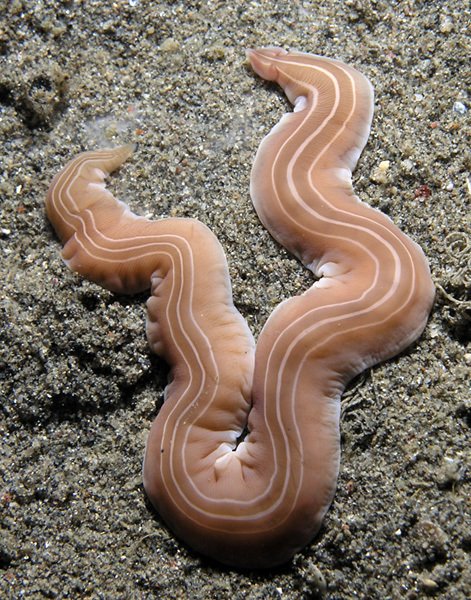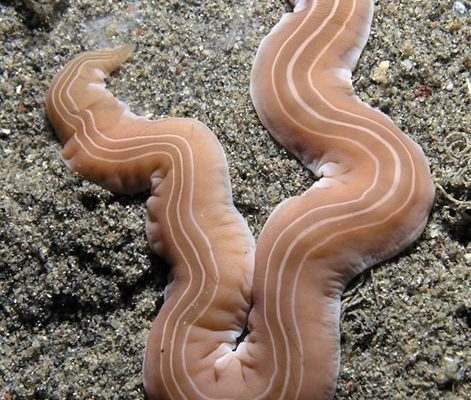
Ribbon worms, part of the phylum Nemertea, can be found in various marine habitats, from tidal pools to deep-sea environments. Their ability to respond to changes—like temperature, salinity, and pollution—plays a crucial role in their survival. Just as we adjust to new situations, these worms have their own set of reactions that help them thrive. So, let’s dive deeper into how ribbon worms manage to cope when life’s conditions change.
Understanding Ribbon Worms: A Quick Overview
Ribbon worms are long, slender creatures known for their smooth, flat bodies. They can vary in length from just a few centimeters to several meters, depending on the species. They inhabit marine environments worldwide and are often found hiding in sand or among seaweed. What makes them truly unique is their feeding mechanism, which involves a specialized organ called a proboscis. This organ can extend out to capture prey, mainly small invertebrates.
Ribbon worms are not just interesting because of their appearance; their biological makeup allows them to respond to different environmental factors. They possess sensory cells that help them detect changes in their surroundings. This sensory input is crucial for their survival, as it assists in locating food, avoiding predators, and finding suitable habitats.
Temperature Changes and Behavioral Responses
Temperature is one of the primary environmental factors that affect ribbon worms. These creatures are ectothermic, meaning their body temperature is influenced by the surrounding water. When ocean temperatures rise or fall, ribbon worms react in various ways.
For instance, warmer waters can lead to increased metabolic rates, making them more active and encouraging feeding. However, if temperatures rise too high, it can be detrimental. You might find them retreating deeper into the sand or seeking cooler waters, just like how we might look for shade on a hot day. This behavior helps them regulate their body temperature and avoid heat stress.
Conversely, during colder periods, ribbon worms might slow down their activities. They could even enter a state similar to hibernation, conserving energy until conditions improve. This adaptability highlights the importance of temperature regulation in their lives.
Salinity and Its Impact on Ribbon Worms
Salinity, or the saltiness of the water, is another vital factor for ribbon worms. These organisms thrive in specific salinity ranges, and fluctuations can impact their health and behavior. If the salinity of their environment drops (like during heavy rainfall), it can stress them out.
When faced with lower salinity, ribbon worms may try to move to more favorable areas, much like how we might seek out a comfortable climate. This migration helps them avoid osmotic stress—a condition where their body’s water balance is disrupted. Conversely, in areas with increased salinity, such as evaporation ponds, they may show reduced activity or seek refuge in deeper, more stable environments.
Pollution and Ribbon Worm Responses
As human activities continue to impact marine ecosystems, pollution has become a significant concern. Ribbon worms are sensitive to pollutants like heavy metals and chemicals, which can affect their survival.
When exposed to polluted waters, ribbon worms might change their behavior. For instance, they may avoid areas with high contamination and seek cleaner environments, similar to how we might avoid polluted parks. Changes in their feeding habits can also occur; they might become less active or stop feeding altogether to mitigate exposure to toxins.
These responses are crucial for their survival, but they also indicate the health of marine ecosystems. When ribbon worms change their behaviors due to pollution, it can serve as an early warning for environmental issues affecting larger marine life.
Adaptations to Environmental Stressors
Over time, ribbon worms have developed several adaptations to handle environmental changes. These adaptations allow them to not only survive but also thrive in fluctuating conditions. For example, some species can alter their reproductive strategies based on environmental stressors.
In harsher conditions, they might produce eggs that are more resilient to extreme temperatures or salinity. This flexibility ensures that future generations have a better chance of survival, even if the environment changes dramatically.
Additionally, ribbon worms can regenerate lost body parts, which is a fascinating survival mechanism. If they lose part of their body due to predation or environmental stress, they can regrow it. This ability allows them to recover quickly and maintain their role in the ecosystem.
The Role of Ribbon Worms in The Ecosystem
Ribbon worms aren’t just passive residents of their environments; they play an essential role in their ecosystems. By feeding on small invertebrates, they help regulate populations and maintain a balance within the food web. This balance is crucial for overall ecosystem health.
As they interact with other marine organisms, ribbon worms also contribute to nutrient cycling. They break down organic matter, making it available for other organisms. In doing so, they support the growth of various marine plants and animals, showcasing their importance in sustaining biodiversity.
Unfortunately, as environmental conditions change due to climate change and human activities, the delicate balance ribbon worms help maintain can be disrupted. Understanding their responses to environmental shifts can provide valuable insights into the health of marine ecosystems.
Future Implications for Ribbon Worms
Looking ahead, the ability of ribbon worms to adapt to environmental changes is a topic of ongoing research. As climate change continues to impact ocean temperatures and salinity, studying these creatures can help scientists forecast how marine life might cope with these challenges.
By examining their behaviors and adaptations, researchers might discover new strategies that other marine organisms can use to survive. These findings could encourage conservation efforts aimed at protecting marine habitats and promoting biodiversity.
Moreover, understanding ribbon worms can inform us about the broader implications of environmental changes in our oceans. When we learn how such small creatures adapt, we gain insight into the future of entire ecosystems, helping us to make more informed decisions about preserving our oceans.
In conclusion, ribbon worms are remarkable little creatures that exhibit fascinating responses to environmental changes. From temperature and salinity to pollution, their adaptability sheds light on the health of marine ecosystems. As we continue to understand these responses, we can better appreciate the delicate balance of life beneath the waves.

